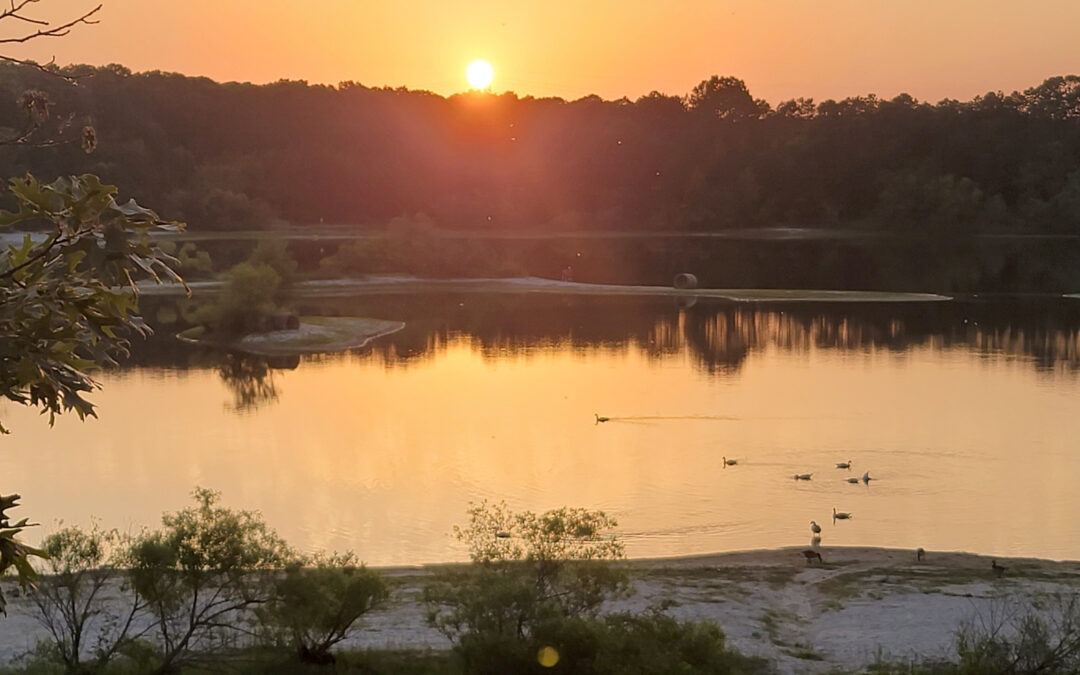If the summer solstice, the longest day of the year, was two weeks ago now as we enter the Fourth of July weekend, why did the long, bright summer evenings get longer for days after?
Between the solstice on June 20 and Independence Day, Atlantic City lost 5 minutes and 22 seconds of daylight, according to www.sunrise-sunset.org. However, sunsets kept getting later for eight days following the solstice, peaking this past Saturday, June 28, with the sun setting at 8:30:13 p.m. in the city.
In fact, the sunset on the Fourth of July in the city (8:29:31 p.m.) is just a bit later than the sunset on the summer solstice (8:29:22 p.m.), when the sun’s direct rays go over the Tropic of Cancer at 23.3 degrees north latitude.
This is true for all of the globe. However, the closer to the poles you get, the lesser the difference. Sandy Hook’s latest sunset is on June 27 this year, 50 seconds later than the one on the solstice.
Go south to the island of Aruba, and the latest sunset is on July 10: 20 days after the summer solstice.
Meanwhile, Nuuk, the capital of the arctic Greenland, had its latest sunset on June 22, two days after the solstice.
The opposite is true for our earliest sunrises. They happen before the longest day of the year. This year, the sun rose at 5:28:45 a.m. in Atlantic City on June 13, a week before the solstice when sunrise was 5:29:27 a.m.
The equation of time
The reason for this difference has to do with the equation of time. Don’t fret. This isn’t a big, long list of letters and numbers you need to solve. Really, it’s just the difference between the time we measure on our clocks and time measured by the sun.
Time according to the sun
The sun rises in the east and sets in the west. As it moves, it passes over an imaginary line running from south to north. When it reaches its highest point in the sky, it is referred to as solar noon. The difference between the solar noon on one day compared to the next is the apparent solar day.
Around the solstices, the apparent solar day is slightly more than 24 hours. Meanwhile, the apparent solar day is slightly less than 24 hours around the spring and fall equinoxes, according to Larry Denenberg, a Harvard mathematician. That’s due to tiny shifts in how long it takes for the Earth to spin once on its axis.
Earth’s tilt
The Earth’s tilt to and from the sun around its axis is the reason we have the seasons in the first place. As the Northern Hemisphere tilts most toward the sun during June, the sun’s rays are stronger and higher in the sky, causing us to warm. During December, as it tilts farthest from the sun, its rays are weaker and lower in the sky. As a result, it impacts how quickly the sun appears to move across our sky throughout the year.
Earth’s orbit
around the sun
The Earth does not spin in a perfect circle around the sun. It’s more egg shaped. When the Earth is closer to the sun, it travels more quickly in orbit than when it’s farther away. In fact, the Earth is farther from the sun during the Northern Hemisphere’s summer.
Time according
to our clocks
Man-made clocks are created for 24-hour days, every day. That’s close, but not perfectly matched up with the time it takes for the Earth to complete one spin on its axis.
So why the later sunsets?
Near the summer solstice, solar noon, when the sun is highest in the sky, occurs at a slightly later clock time each day. As solar noon gets later, it pulls the sunrises and sunsets later, too. This is true even as the tilt of the Earth causes the days to be longer and shorter.
On the summer solstice, solar noon was at 12:59:23 p.m. When the latest sunset occurred on June 28, 2025, it was at 1:01:05 p.m. The math checks out between the two dates.
Difference in solar noon time: 102 seconds, due to the equation of time.
Difference in sunset time: 111 seconds later.
Difference in sunrise time: 153 seconds later.
Difference in day length: 42 seconds less.
The same type of phenomenon happens around the winter solstice, too. In fact, it’s more exaggerated.
The earliest sunset in Atlantic City, 4:35:40 p.m., occurs roughly two weeks before the shortest day of the year. In 2025, the earliest sunset will occur Dec. 7 – two weeks ahead of the Dec. 21 winter solstice.
Admittedly, the difference between the sunrise and sunset on the summer solstice compared to the earliest sunrise and latest sunset isn’t very noticeable, but it is one of the many strange quirks that make the Earth a special place in our universe.
When you see the sun sink below the horizon before the Independence Day fireworks, you’ll now know that sunset was later and why.
Happy Fourth of July, America.















